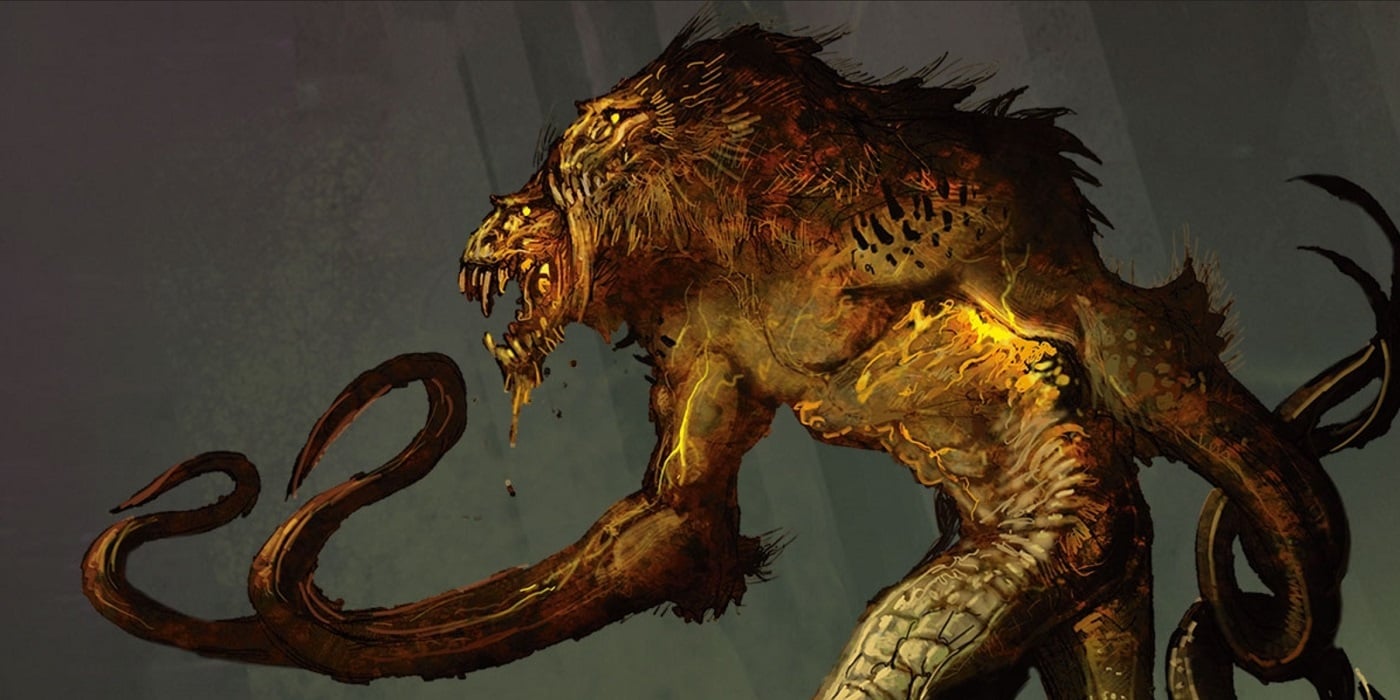B’Elanna Torres is Star Trek’s Best Spock Inversion
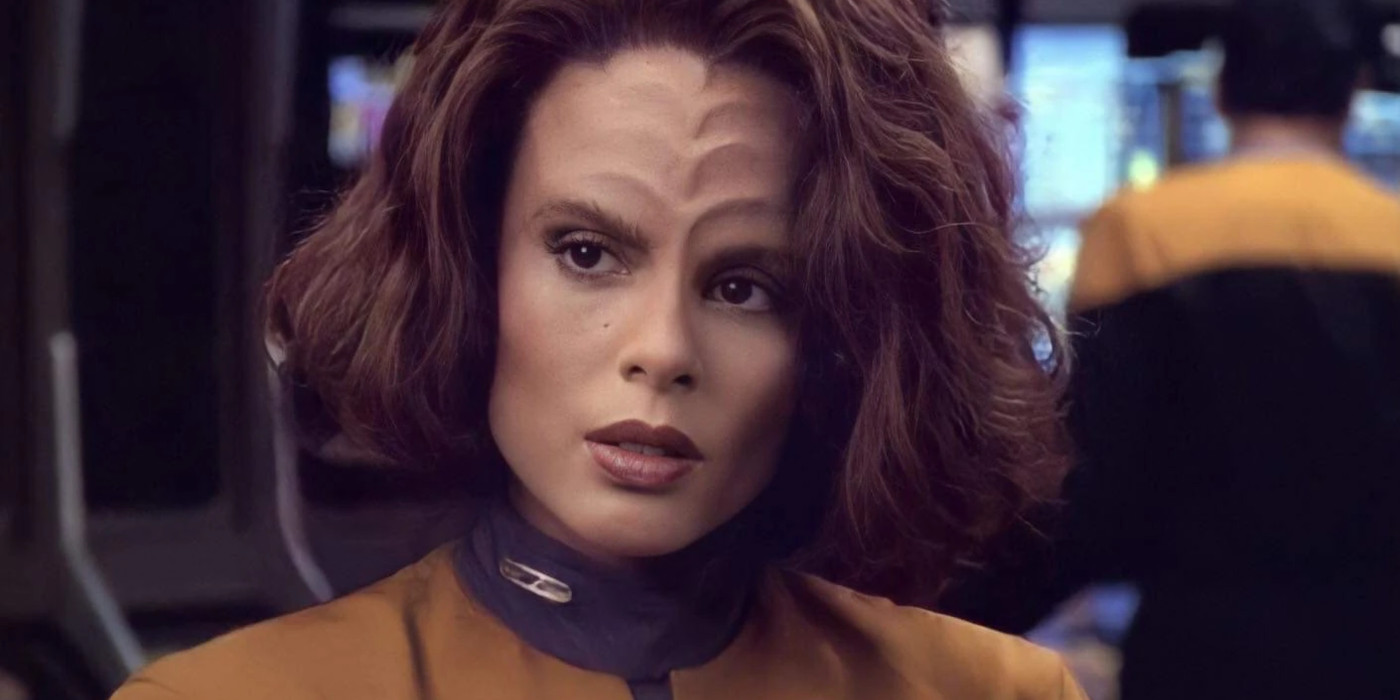
Among Star Trek fans, people talk about how Data is Spock’s equal opposite number. But have you considered it’s B’Elanna Torres?
Spock. The first frontier. His are the voyages of Star Trek’s original alien. His continuing mission: to point out more and more about humanity through the lens of his pointy, pointy Vulcan ears. And Star Trek’s writers have been boldly using him ever since as a template to try and take the franchise to places it has never gone before.
Spock’s whole deal is that he is half Vulcan and half human. He struggles with that duality as he tries to understand both himself and his human counterparts. Why are they so emotional, these humans? Every Star Trek show has a character who plays a variation on this theme. In Star Trek: the Next Generation it is Data. In Deep Space Nine it is Odo.
Star Trek: Voyager is a different story in that there are multiple contenders for the Spock spot. Is it the Doctor, the photonic lifeform struggling to understand what it means to be more than his holographic programming? Is it Seven of Nine, the former Borg trying to find a balance between her desire for collective perfection and her reality of human frailty?
No. It’s B’Elanna Torres. And not only is she Voyager‘s Spock, she’s actually the best Spock-type since Spock.
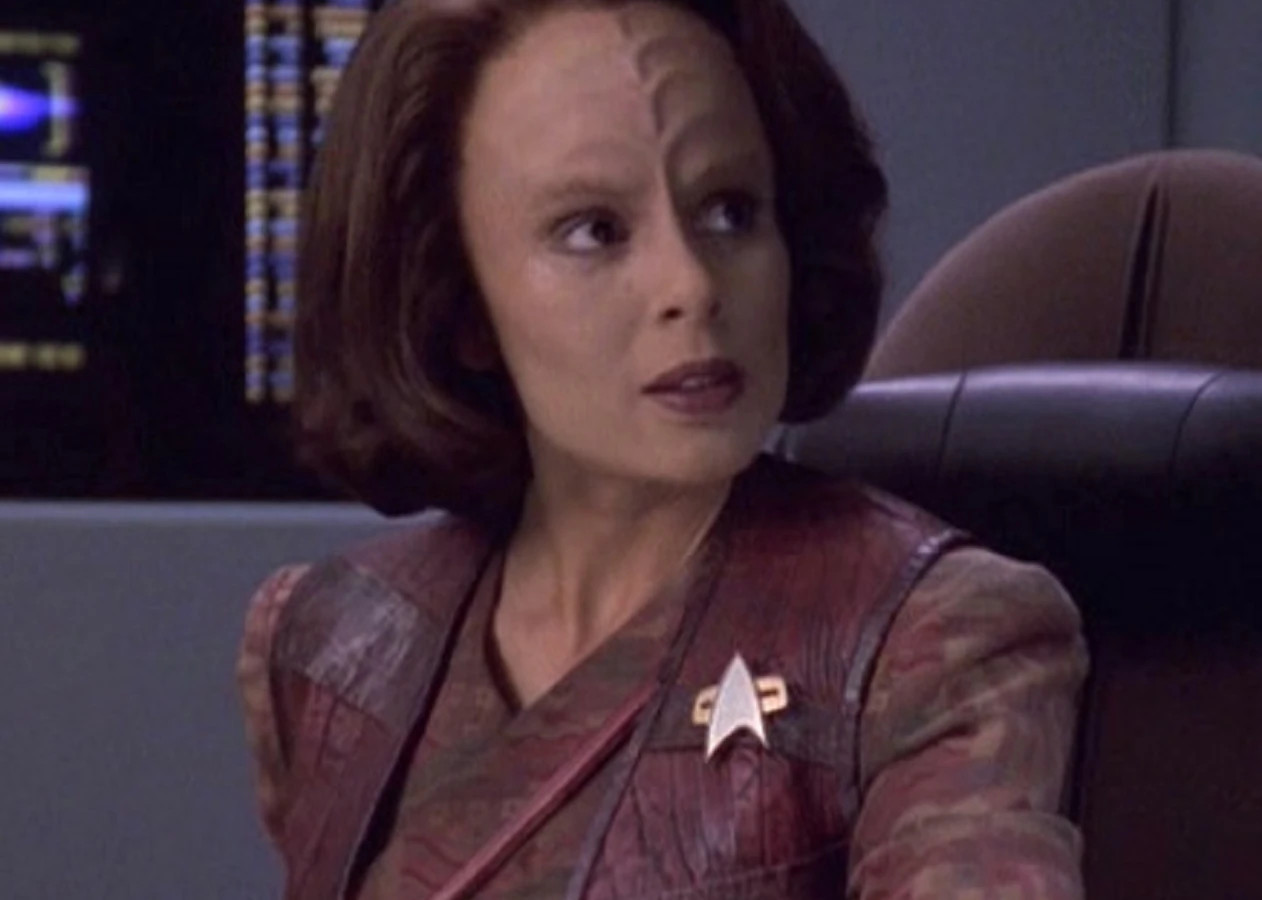
B’Elanna Torres: A Primer
Lieutenant B’Elanna Torres is Voyager’s chief engineer. She’s half Klingon and half human. And her whole thing is that she struggles with accepting her Klingon half while also not quite connecting with the humans around her. To oversimplify: Be’Elanna Torres is Spock with a temper.
But there’s a lot more underneath the surface that makes Torres tick. And since both Torres and Star Trek: Voyager are oft-maligned, we should take stock of her baseline and why she is the way she is.
B’Elanna originally hails from Kessik IV, a Federation colony. She and her mother were essentially the only Klingons there and they were constantly made to feel different. B’Elanna’s mother, despite marrying a human, has an extreme dedication to Klingon rituals and beliefs. B’Elanna’s father, unable to handle it, abandons them both when she is only five years old.
Despite that, B’Elanna joins Starfleet. But despite being a promising engineer, she washes out at age 19. Angry at herself and the world, B’Elanna joins the terrorist organization the Maquis. There she finds an outlet for her rage in seeking liberation for the Bajoran people from the Cardassian Empire.
Until one day she is whisked away to the Delta Quadrant. There she and the other Maquis must assimilate in order to work with the remaining crew of the starship Voyager.
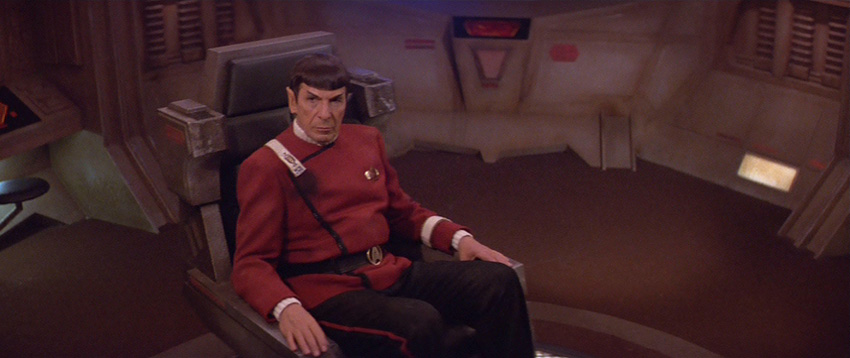
Vulcan Vs. Klingon
Spock and B’Elanna are both half alien and half human. And for both of them their root challenge is reconciling that they are both and neither. But the way they manifest that challenge is totally different.
Spock’s solution for feeling like an outsider is to choose to focus on his Vulcan half. He struggles when his humanity sneaks out. B’Elanna’s solution for feeling like an outside is to choose to focus on her human half. She struggles when her Klingon temper sneaks out.
Where things get really interesting is when we look at these characters in the long view. Spock goes so far into Vulcan philosophy that he attempts to remove all emotion with the Kolinahr ritual—but it doesn’t stick.
Spock makes the ultimate sacrifice. He dies to save his friends which he tries to treat as a logical act. The needs of the many outweigh the needs of the few, or the one. But that theory is blown wide open when his friends risk everything to bring him back. His rebrith is, by logic, a mistake. The needs of the one outweighed the needs of the many. Illogical.
And yet, as Spock ages he learns that logic is only the beginning of wisdom. He is not the most outwardly emotional person. But his desire to help Kirk heal from his son’s death is an emotional act. And Spock’s cowboy diplomacy in helping the Romulans towards unification is an emotional act, too.
When Data asks Spock if choosing Vulcan philosophy over humanity is the right decision, Spock says, “I have no regrets”. Data points out that the saying is a human expression. Because, in reality, Spock has embraced his human self.
Which brings us back to B’Elanna Torres.
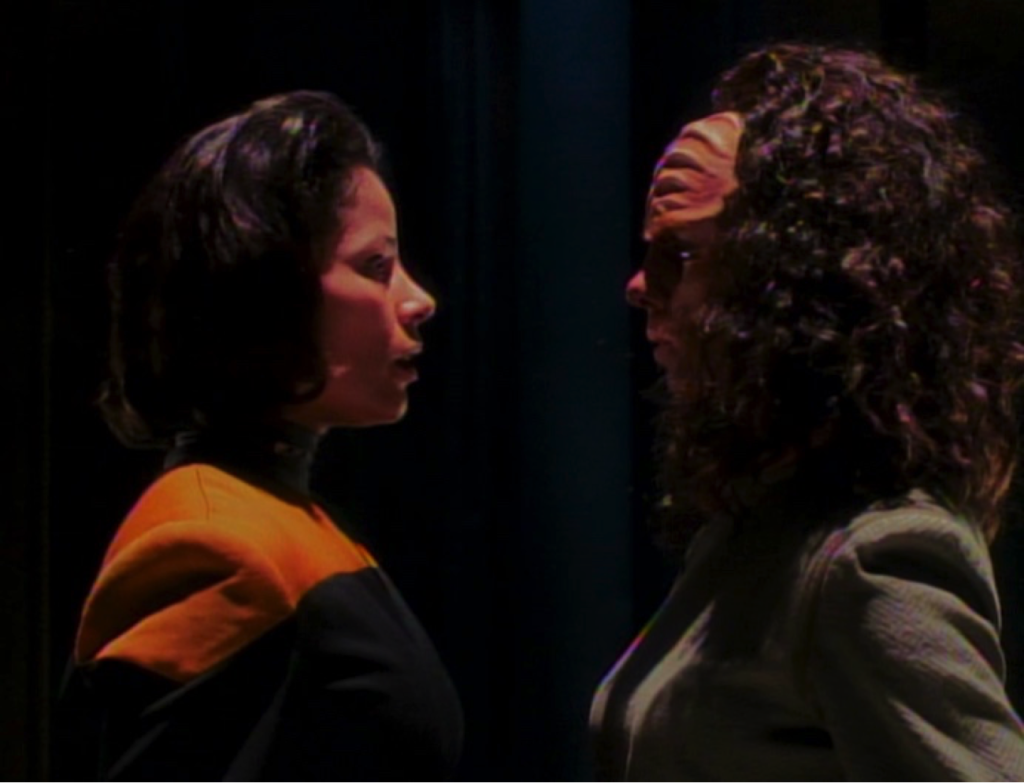
B’Elanna Torres: The Reluctant Klingon
It does not take long to introduce the idea that B’Elanna doesn’t like being a Klingon. But we see it manifest in a more literal way with the season one episode “Faces”. In this story B’Elanna is stripped of her Klingon DNA by the Vidiians because they think a fully Klingon version of B’Elanna can create antibodies for the Phage, a disease that’s wiping them out.
Does this concept make science sense? No. But, it gives B’Elanna a chance to face the part of herself she hates. And what she finds instead is many of the best parts of herself: determination, loyalty, and the ability to fight against fear and despair.
More than that, “Faces” is a story about how you cannot become not yourself. Klingon B’Elanna acts differently partly out of expectation. She is full Klingon, therefore she talks differently and fights differently. Human B’Elanna does much the same.
The longer they work together to escape the Vidiians, the more they become like one another: because they are the same person. In the end, the Klingon B’Elanna dies saving her human half. And then the human half must take back on her Klingon DNA to survive.
At this point B’Elanna concludes that, while her Klingon side has shaved her again, that she will always be fighting that part of herself. But this is not the end point for B’Elanna’s journey.
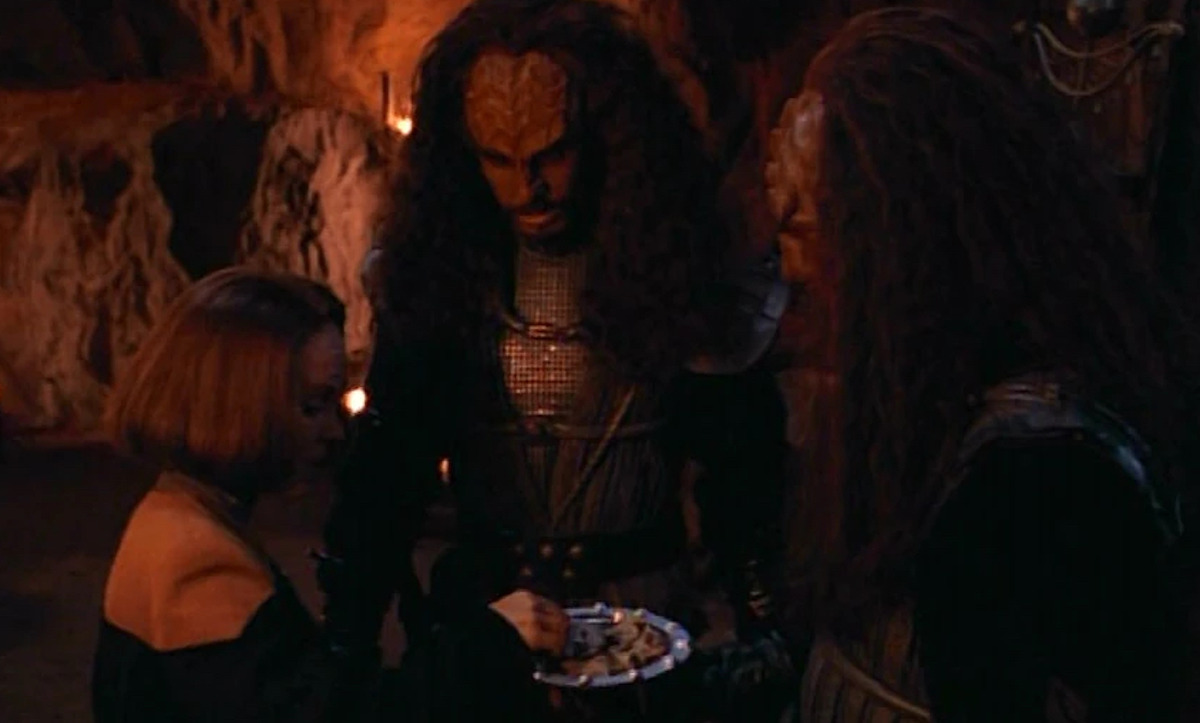
Day of Honor
Klingons: they have A LOT of rituals. Season one B’Elanna is maybe not so into the idea of those rituals. But by season four when she’s the lone Klingon for years again, she starts to think a little differently. And while “Day of Honor” covers a lot of ground, one of its core plots is that B’Elanna wants to embrace being Klingon in a more intentional way.
Does that go great? No. She basically has a stub toe of a day and that’s before Seven of Nine’s idea to help with faster travel ends in jettisoning the warp core. And the fallout of that is B’Elanna and Tom Paris both winding up drifting in the vacuum of space.
In spite of all that, though, B’Elanna still tries to celebrate the Day of Honor. She eats a blood pie and she takes a a trip to the holodeck to also eat a targ before fighting a bunch of Klingons.
Yes, she decides against completing the ritual by the time pain sticks enter the equation, but the part that matters is that she’s interested. Without question B’Elanna Torres is trying to take control of what it means to be a Klingon for her.
And while she stumbles on this venture, that effort does help her open up more. “Day of Honor” ends with B’Elanna admitting that she is in love with Tom Paris. She’s able to do this in no small part because she, like Spock before her, is slowly finding a way to incorporate the part of her heritage she struggles with.
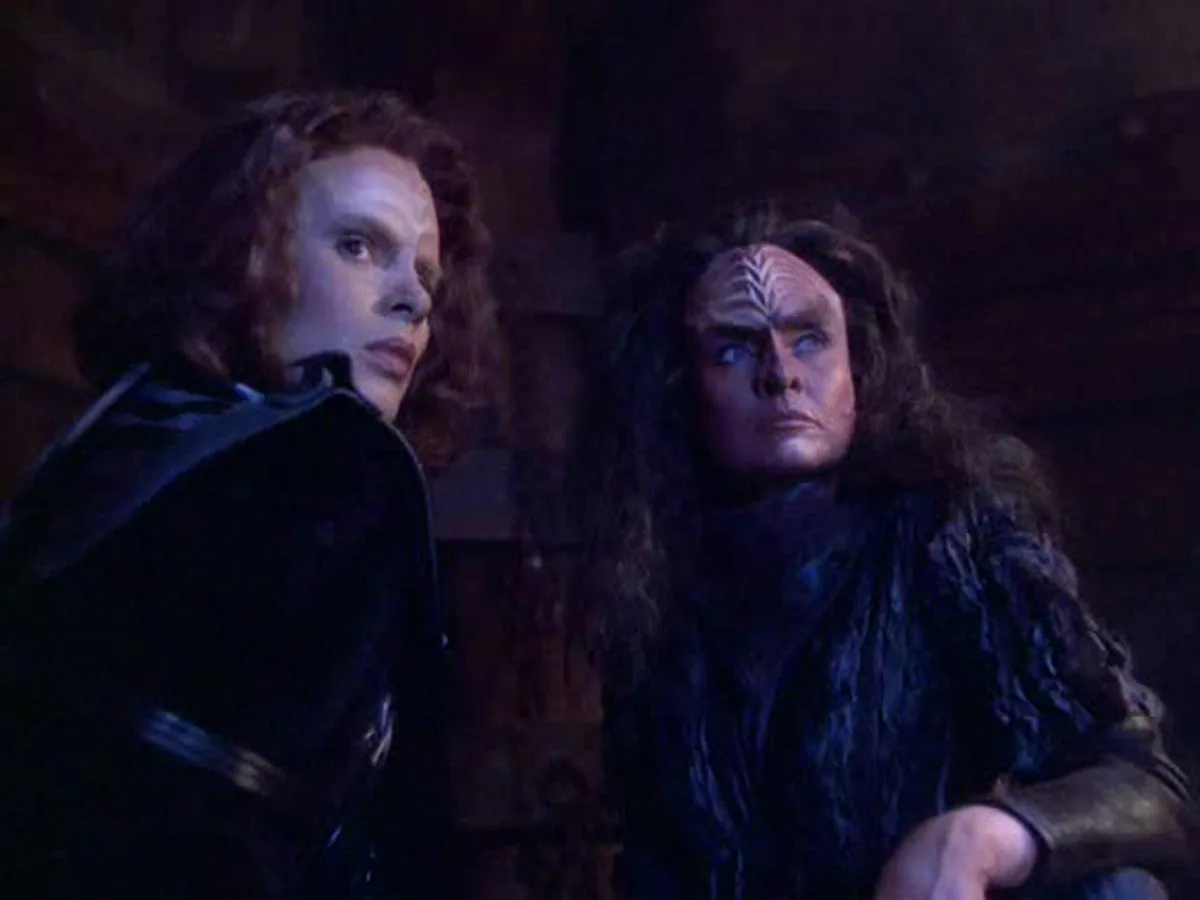
B’Elanna Torres and the Barge of the Dead
B’Elanna finds herself alone in a shuttlecraft when conditions cause a near death experience. She envisions herself on the Klingon barge of the dead that leads damned souls to Gre’thor A.K.A. Klingon hell. And on the barge is B’Elanna’s mother. The ferryman informs B’Elanna this is not her time and she wakes up back on Voyager.
B’Elanna is understandably spooked. She has always resented her mother but she loves her, too. The thought that B’Elanna’s dishonor as a Klingon would lead her mother to hell is too much to bear. And so she begs to be put back into the dying state so she can change her mother’s fate.
This is a huge shift for B’Elanna. She completely embraces Klingon beliefs here. And she nearly dies in the process. She imagines being in hell in her mother’s place. And hell is Voyager—a place where people wear her culture like a costume and pass it off as understanding.
But this isn’t just a story about acknowledging compassion towards her mother, this is B’Elanna choosing compassion for herself. In her final moments on the barge, surrounded by Klingons and Voyager crew alike, she holds her bat’leth in hand, demanding to know what she’s supposed to do.
This has always been B’Elanna’s question—who is she supposed to be and who must she fight to become that person. In the end her mother pushes her to throw the weapon away. In “Faces” B’Elanna believes she must fight herself forever. But in “Barge of the Dead” she finally begins to let that fight to be one or the other go.
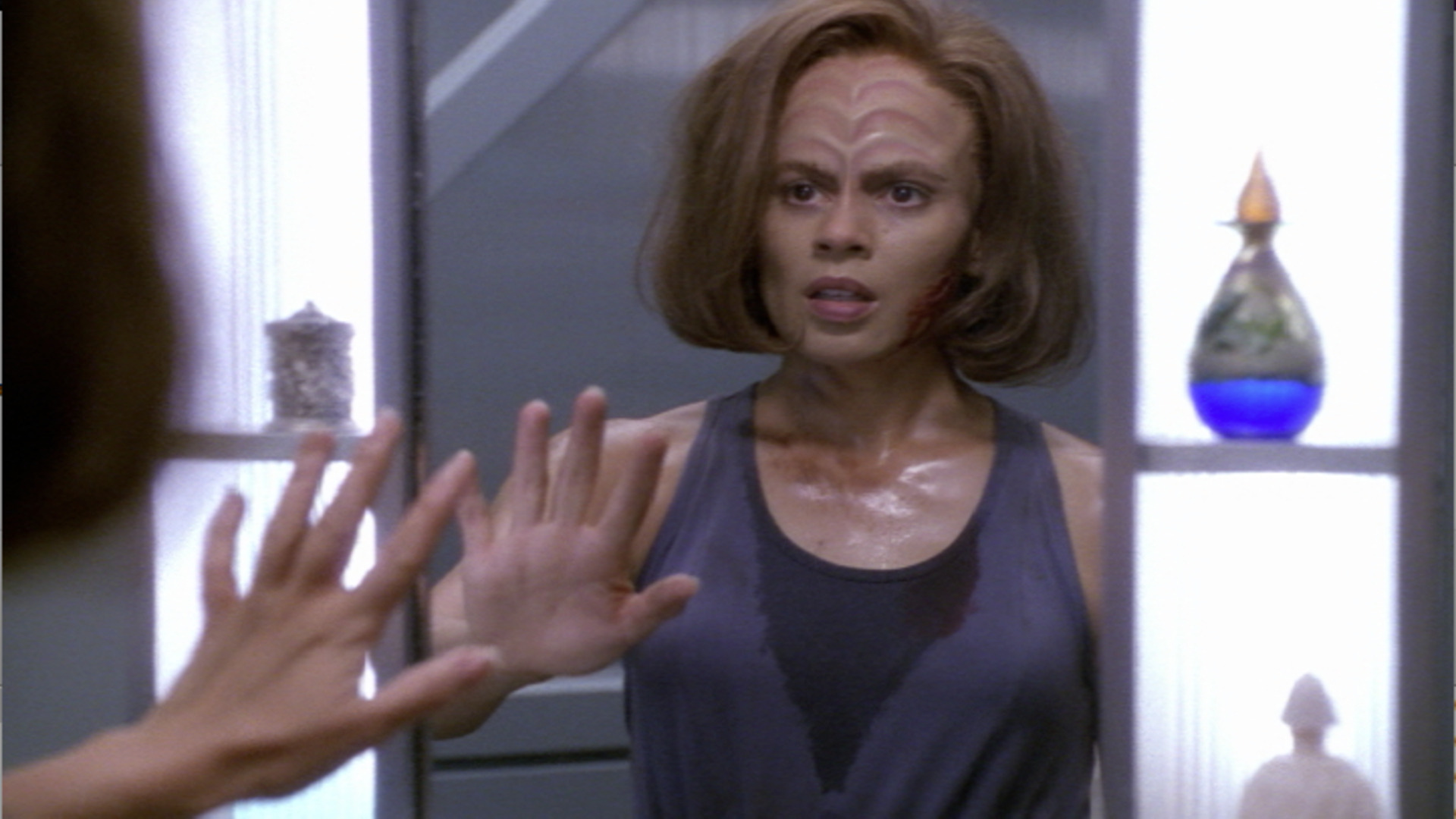
But the Biggest Thing in Common is…
B’Elanna is officially diagnosed with clinical depression in “Extreme Risk”. This story comes after B’Elanna finds out that virtually every Maquis back home is dead. She ceases caring or being passionate about work or relationships. And she begins going in the holodeck and creating scenarios, without the safety protocols, that will get her killed.
B’Elanna Torres is suicidal and Star Trek: Voyager doesn’t pull back from that.
Even without the diagnosis, Spock suffers similarly. He conceals all emotion, even from his closest friends. When his emotions do come out, they are extreme either delirious joy or crushing sadness. Spock literally chooses death to save his friends. “I’m sorry, Doctor. I have no time to discuss this logically.” You can dress it up in resurrection, but the man chooses death.
Consider the story “Unification” where Spock abandons all ties to Starfleet by going to Romulus. He settles his affairs and goes to the homeworld of the enemy. A man does not do that because he expects to live. Why should Spock live? His friends are all dead now.
Yet it is in this story where Spock finds new purpose. These Romulans, like him, are split between two worlds, crying out for help. Spock realizes he can help them.
Spock has a broken relationship with his father Sarek—just like B’Elanna and her mother. And similarly to B’Elanna, beyond death Spock reaches to Sarek once more through a mind meld with Picard. And in that moment he knows his father loved him.
In that moment, just like B’Elanna, Spock’s centuries long fight over his own duality, truly begins to end.





